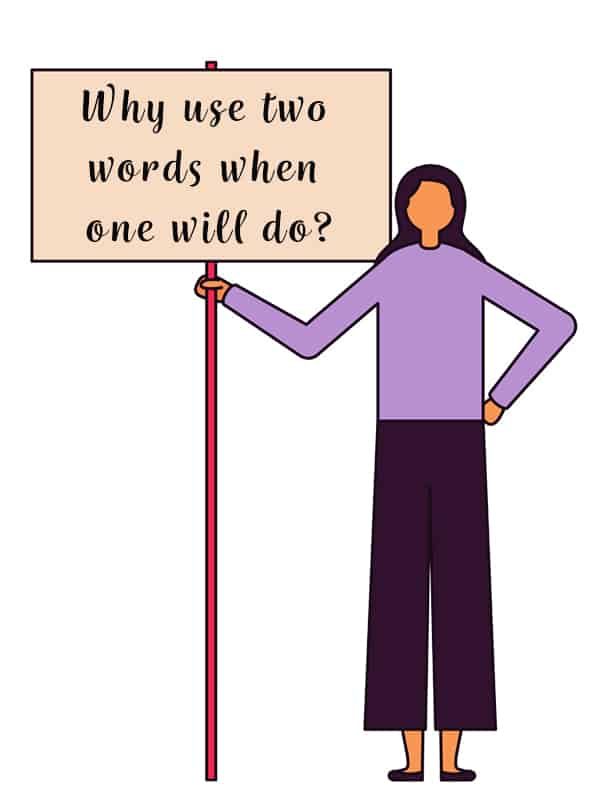6 annual report writing tips from a professional editor
By Sharon Lapkin
A company’s annual report is an important and ongoing component of its corporate financial reporting. It provides information to shareholders and other stakeholders about the company’s financial performance over the past year.
Following are my six most important annual report writing tips. They include common errors that I’ve seen over the past 14 years as an editor, and my advice on how to avoid them.
Annual reports are publicly available, so they’re the public face of the company.
They provide transparency about the activities of the company over the previous 12 months, and are an opportunity to showcase the company’s success, community work and global conscience.
Prospective investors, creditors, analysts, employees, and any other interested parties, can study and analyse the company’s growth. They can read about its ability to pay its suppliers, whether it makes a profit and what proportion of its earnings is retained to develop the company.
Now (after a little quote from Warren Buffet) let’s take a look at my annual report writing tips.
When I take a look at a company’s annual report,
if I don’t understand it, they don’t want me to understand it.
– Warren Buffett
Smooth out the inconsistencies

Annual reports are usually multi-authored, and this can create consistency issues.
Each section writer has a different writing style, and these contributing writers are often not aware of what others are writing.
Readers suffer the consequences of this disconnect. They grow tired of the inconsistencies and instead of reading on, they flick through the pages to check they’re not missing vital information then close the report.
The annual report isn’t the place to tell stories – or the place to take three pages to say something you could say in one. It’s a dynamic publication – one that presents information in clear unambiguous terms, without rambling or repetition.
A good annual report addresses all stakeholders, and presents precise information in informative and interesting ways.
Minimise jargon and acronyms

Using industry-specific jargon and acronyms is the easiest way to communicate if you work in-house.
Your work colleagues all understand this codified way of communicating. But when it comes to the company annual report, please don’t do it. It’s a sure-fire way to alienate and lose readers.
If you need to use industry-specific terms, acronyms and abbreviations, spell out the short form in the first instance and then use that short form thereafter. See this practice in the following example.
A new LMS (learning management system) was installed in July this year, and by early August the LMS was fully functional.
If you haven’t repeated the short form (LMS) for a few pages and are not sure readers will remember its meaning do the following:
The LMS [learning management system] was an expensive investment.
The conventional use of square brackets is for editorial comment. In this case you’re reminding the reader what LMS stands for. Don’t do it too often; however, it’s a good save to help your readers.
Also create a glossary in your annual report that includes explanations and definitions of these terms for your readers. But don’t forget to tell them where it is. Add ‘See Glossary’ in round brackets after terms that need clarifying, and ensure the Glossary is in the report’s Table of Contents with a page number.
Finding these annual report writing tips useful? Great! Keep reading.
Be forthright

Transparency is your keyword.
Don’t leave out meaningful analysis in your annual report.
If your company’s performance has been poor, or there’s been an unfortunate work accident, be upfront and address it.
A good writer, together with a good editor, is a great support here.
Work with them and rely on their expertise to communicate this type of information in the most appropriate way.
Don't leave it all to the designer

Don’t hire a graphic designer and think you’ve got the project covered.
Designers aren’t responsible for grammar or punctuation, or for the factual accuracy of the content you give them. Remember, a designer is an intrinsic part of the team, but you also need an editor.
A professional editor will work with your writer/s or project manager and they will know when and how to raise queries.
Good editors know how a designer works. They know how text and graphics should sit on a page, and they work with the designer to fit your content perfectly. Page fitting is a tricky skill and a vital part of an editor’s toolkit.
The designer and editor work collaboratively to make your annual report a professional publication. Every page is perfectly pitched and error-free, and you can trust that your annual report writing is being treated with respect.
Leave the numbers to the accountants

But what about the numbers?
An accountant prepares the financial information in an annual report. If it’s a large company, it may be a team of accountants.
A lawyer may also be involved in preparing the financial and legislative content. A professionally trained editor knows how to work with subject-matter experts, such as lawyers and accountants.
Editors won’t edit the financials in an annual report. Instead, they’ll leave queries for the accountant and/or lawyer if something doesn’t look correct or appears to be missing.
This is the most important annual report writing tip because meddling with accountant’s numbers will get you into a world of mess.
Pulling it all together without errors

With so many people contributing to an annual report, it’s possible that a single company employee will struggle to pull it all together at the end of the writing process.
A company employee can overlook, for example, the text on the spine of their company’s annual report. They might even send it to the printer unchecked. Yes! Unfortunately, I’ve seen this happen.
More than 1,000 copies were printed with the wrong date on the spine because the designer hadn’t updated the template from the previous year.
Spine errors are one of the commonest mistakes in publishing, and the consequences are always embarrassing and expensive.
This is why a professional editor is invaluable. Their checklists cover every aspect of the publishing process and they perform an extensive prepress check for you.
When they sign off your annual report, you’ll be confident it’s error-free and ready to publish. That last-minute check of the spine has been done too!
Before you go
I hope you’ve found these annual report writing tips useful.
For more information on the requirements of an annual report go to the CPA [Chartered Practising Accountants] website.
If you’d like to read more great tips on editing reports check out How to edit an annual report.
You might also want to read about the unique method I use when editing reports in How to copyedit like an expert.










